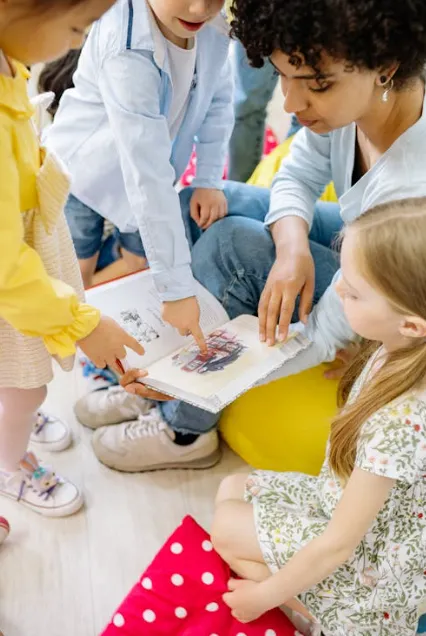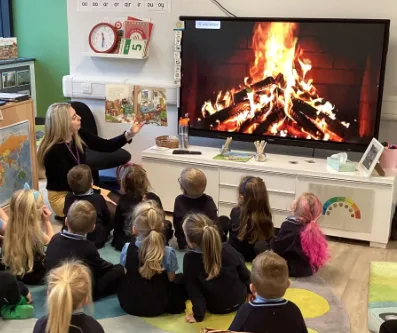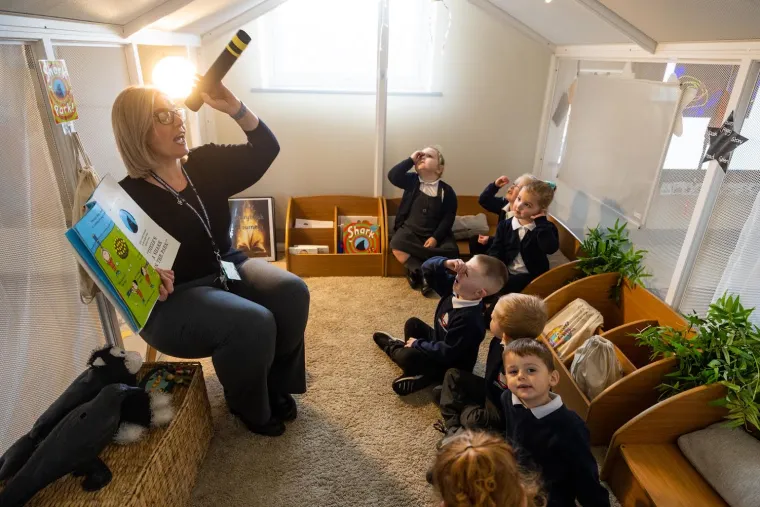The Power of Reading Aloud in Early Years Settings
Stella Jones, Director of Research & Development WISE, Director of Town End Research School and Content Lead for Primary Literacy – Research Schools Network
In early years settings, such as nurseries and childminders, the act of reading aloud is invaluable for young children's language and literacy development. While digital resources like videos and audiobooks can be helpful, nothing replaces the rich, interactive experience of an adult reading aloud. It transforms story time into a shared adventure that sparks imagination, builds language skills and strengthens emotional bonds.

Why interactive reading matters
Reading aloud isn’t just about saying words; it’s about engaging children in the story. Adults can pause to explain new words, act out story details with gestures or sound effects, and change their tone to bring the story to life. This active approach turns story time into a dynamic learning process.
-Ask questions: Pause to ask children questions like, “What do you think will happen next?” or “How does this character feel?” to encourage critical thinking and imagination.
-Add actions: Use gestures, expressions, and sound effects to make stories more engaging and enhance comprehension.
Download our free PDF guide in the Early Reading section of our website and our PEER and CLEAR Framework
The benefits of reading aloud
1. Building vocabulary and comprehension
Books often include words and phrases beyond a child's everyday language. Reading aloud exposes them to richer vocabulary and complex sentence structures, giving them tools to understand and use language effectively.
2. Improving listening skills and focus
Listening to stories helps children develop their ability to concentrate and follow narratives, key skills for later learning.
3. Fostering imagination and critical thinking
Asking open-ended questions during reading encourages children to think creatively, make predictions and connect ideas.
4. Strengthening emotional bonds
Shared reading creates a warm, supportive environment where children associate books with positive emotions, encouraging a lifelong love of reading.

Making reading magical
To inspire curiosity and engagement, early educators can:
-Show enthusiasm: Introduce stories with excitement to pique children’s interest.
-Create an atmosphere: Match the reading environment to the story, such as using dim lights for a bedtime tale.
-Let children choose: Offering a choice of books helps children feel more involved and motivated.
-Encourage Success: Celebrate children’s efforts and achievements during story time to build their confidence.
Interactive Reading in Practice
1. Engage children actively
Ask questions, explain concepts and invite children to participate in the storytelling.
2. Tailor to Interests
Choose books that reflect children’s interests to ensure they stay engaged and curious.
3. Reinforce learning
Repeat key words or phrases to help children absorb new vocabulary and concepts.

The role of adults in early literacy
In early years settings, adults play a pivotal role in fostering literacy. By pausing to explain words, encouraging discussion and making reading a shared, interactive experience, they help children develop essential skills. These interactions make reading enjoyable and meaningful, reinforcing its importance as a communal activity rather than a solitary task.
By prioritising reading aloud, early educators can spark curiosity, develop language skills and create a foundation for lifelong learning and a love of books.
More on interactive reading:
-Video – Interactive reading: High quality interactions through shared reading
-Look in the Communication and Language and Early Literacy aisles of the Early Years Evidence Store
-Download our free PDF guide in the Early Reading section of our website and our PEER and CLEAR Framework
